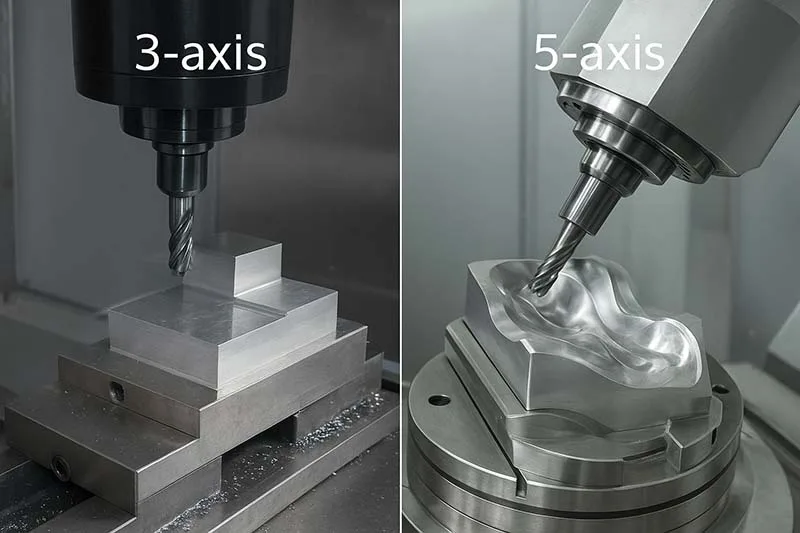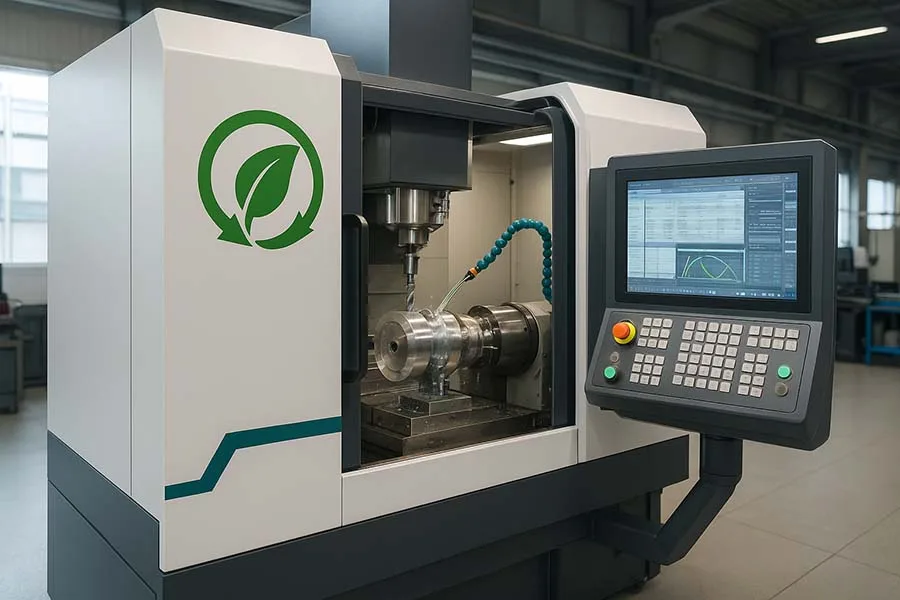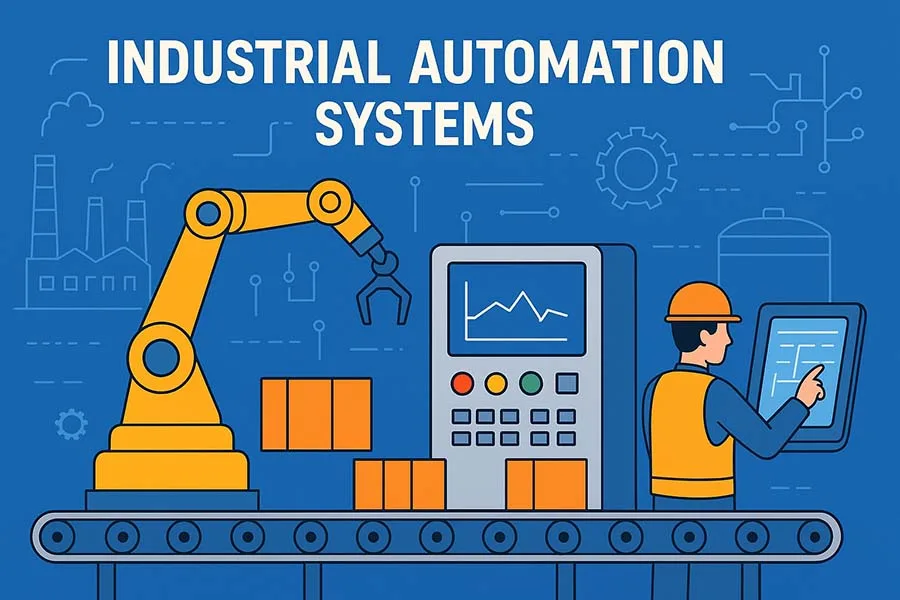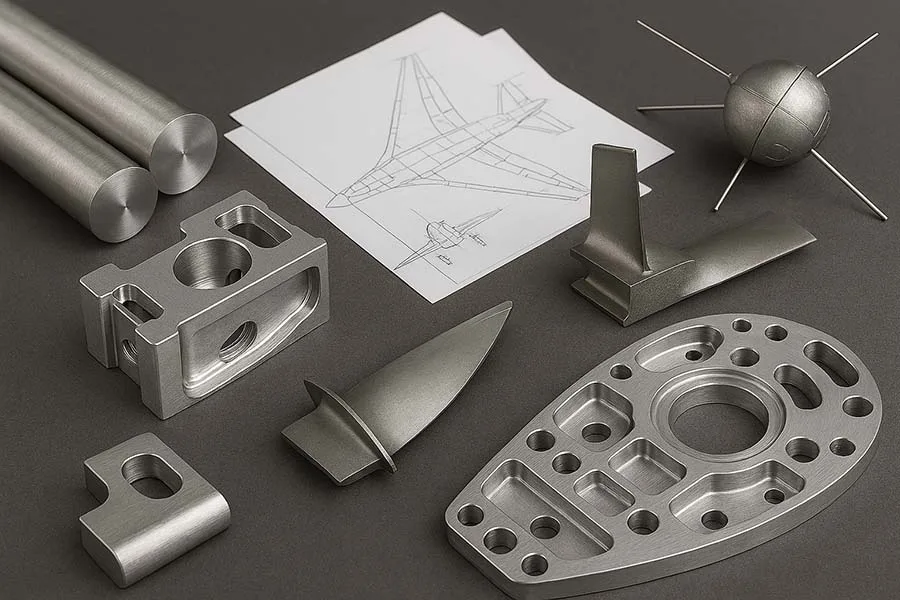Introduction: Why Multi-Axis Matters
In CNC machining, the more axes a machine has, the more complex and efficient the operations can be. But does 5-axis always beat 3-axis? Not necessarily. Each approach has its sweet spot.
If you’re cutting simple prismatic parts, a 3-axis machine may be your best friend. If you’re shaping turbine blades, medical implants, or aerospace components, 5-axis machining could be the only realistic option.
Let’s compare both systems to see how they stack up in terms of precision, flexibility, cost, and real-world performance.
What is 3-Axis CNC Machining?
3-axis machining moves a cutting tool along three directions:
- X-axis → left and right
- Y-axis → forward and backward
- Z-axis → up and down
It’s the foundation of CNC and ideal for flat surfaces, simple pockets, and drilling operations.
Key Features of 3-Axis Machining:
- Best for simple geometries
- Affordable machine setup and tooling
- Widely used in general manufacturing
⚠️ Limitation: Complex undercuts and multi-sided geometries require repositioning or custom fixturing, adding time and error risk.
What is 5-Axis CNC Machining?
5-axis machining adds two rotational movements (A and B or A and C), allowing the tool to approach the part from almost any angle.
Key Features of 5-Axis Machining:
- Handles complex, curved surfaces with ease
- Reduces need for multiple setups
- Delivers better surface finish and accuracy
Technical Detail: High-end 5-axis machines can achieve tolerances as tight as ±0.005 mm, critical in aerospace and medical industries.
⚠️ Limitation: These machines come with higher costs, steeper learning curves, and expensive maintenance.
Comparing 3-Axis vs 5-Axis Machining
| Feature | 3-Axis CNC | 5-Axis CNC |
|---|---|---|
| Complexity | Simple, prismatic parts | Complex, curved geometries |
| Setup Time | Higher (multiple repositions) | Lower (single setup possible) |
| Accuracy | Good for most industrial needs | Ultra-precise, high-end tolerance |
| Cost | Lower machine + tooling investment | Much higher machine + software cost |
| Industries | General manufacturing, automotive | Aerospace, medical, mold & die |
Applications of 3-Axis vs 5-Axis
3-Axis CNC:
- Brackets, plates, housings
- Basic automotive parts
- Consumer electronics enclosures
5-Axis CNC:
- Aerospace turbine blades
- Orthopedic implants
- Complex molds and dies
- Defense and energy components
📊 Interesting Fact: A single 5-axis machine can often replace 3 or more 3-axis machines in terms of output and complexity handling.
Pros and Cons
✅ 3-Axis Pros:
- Lower investment
- Easy to program and operate
- Reliable for straightforward jobs
❌ 3-Axis Cons:
- Requires multiple setups
- Limited for complex geometries
✅ 5-Axis Pros:
- One setup for complex parts
- Superior accuracy and surface finish
- Shorter lead times for high-end work
❌ 5-Axis Cons:
- Very expensive (purchase + upkeep)
- Complex programming
- Overkill for simple jobs
💡 Lesser-Known Fact: Some shops use 3+2 machining (a hybrid of 3-axis with two fixed rotational axes) to cut costs while still accessing multi-axis capabilities.
Multi-Axis Machining: 3-Axis vs 5-Axis FAQ
Want To Read More?
- CNC Machining Processes & Technologies
- CNC Workflow: From CAD to Finished Part
- Tooling and Fixtures in CNC
- Multi-Axis Machining: 3-Axis vs 5-Axis
- AI and Machine Learning in CNC: The Future of Smart Manufacturing
- Predictive Maintenance and IoT in CNC
- Digital Twins in CNC Systems
Conclusion: Choosing the Right Axis for the Job
The choice between 3-axis and 5-axis machining depends on part complexity, budget, and production goals.
- For basic parts with tight budgets → go with 3-axis.
- For complex, high-value components where precision is critical → 5-axis pays off.
The real winners are shops that combine both, using 3-axis for straightforward jobs and reserving 5-axis power for the projects that demand it.
💬 Your Turn: Do you run 3-axis, 5-axis, or a mix of both in your shop? Which one gives you the most ROI? Share your experiences in the comments below and pass this article along on social media — it may help others make the right investment decision.





